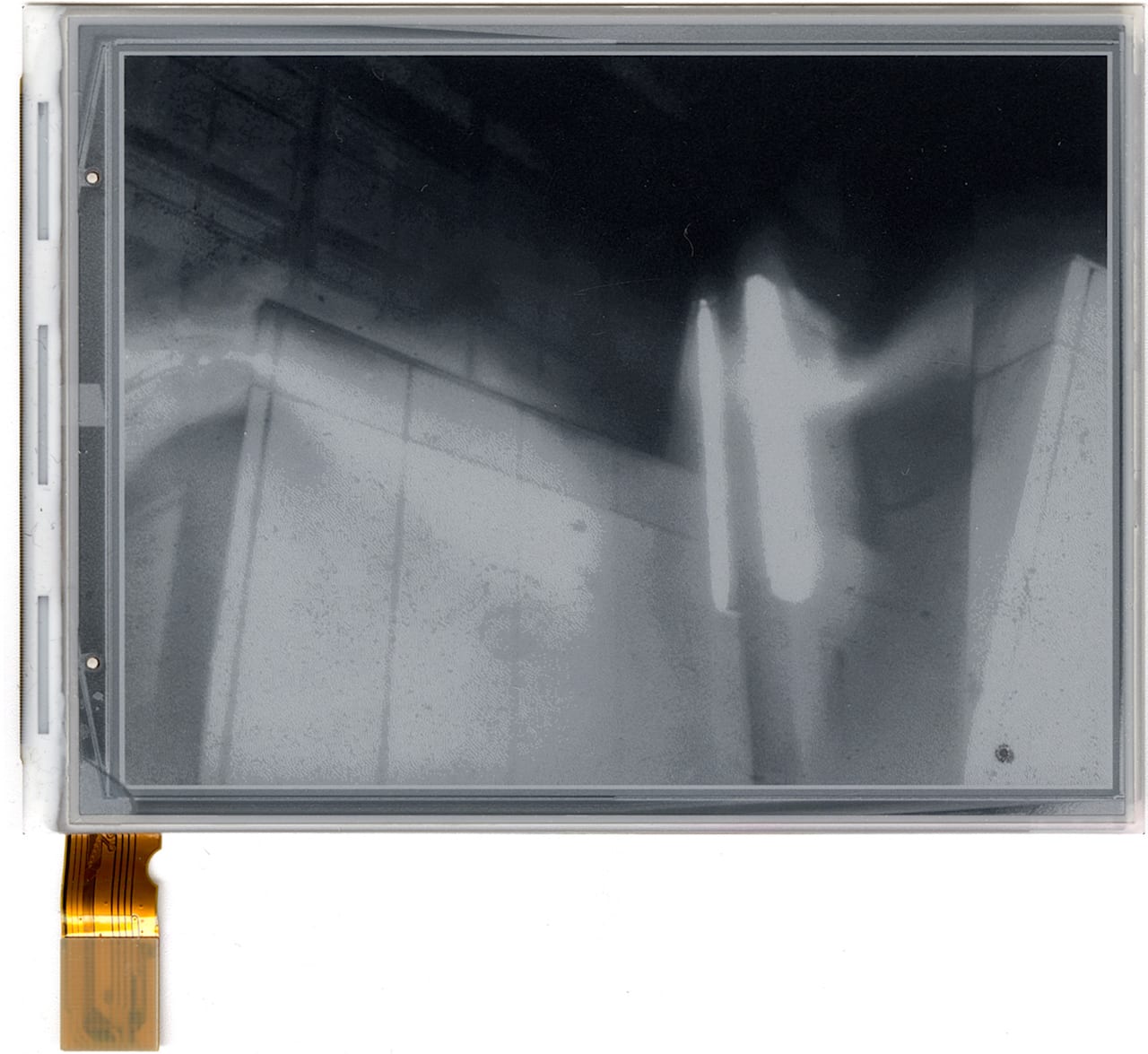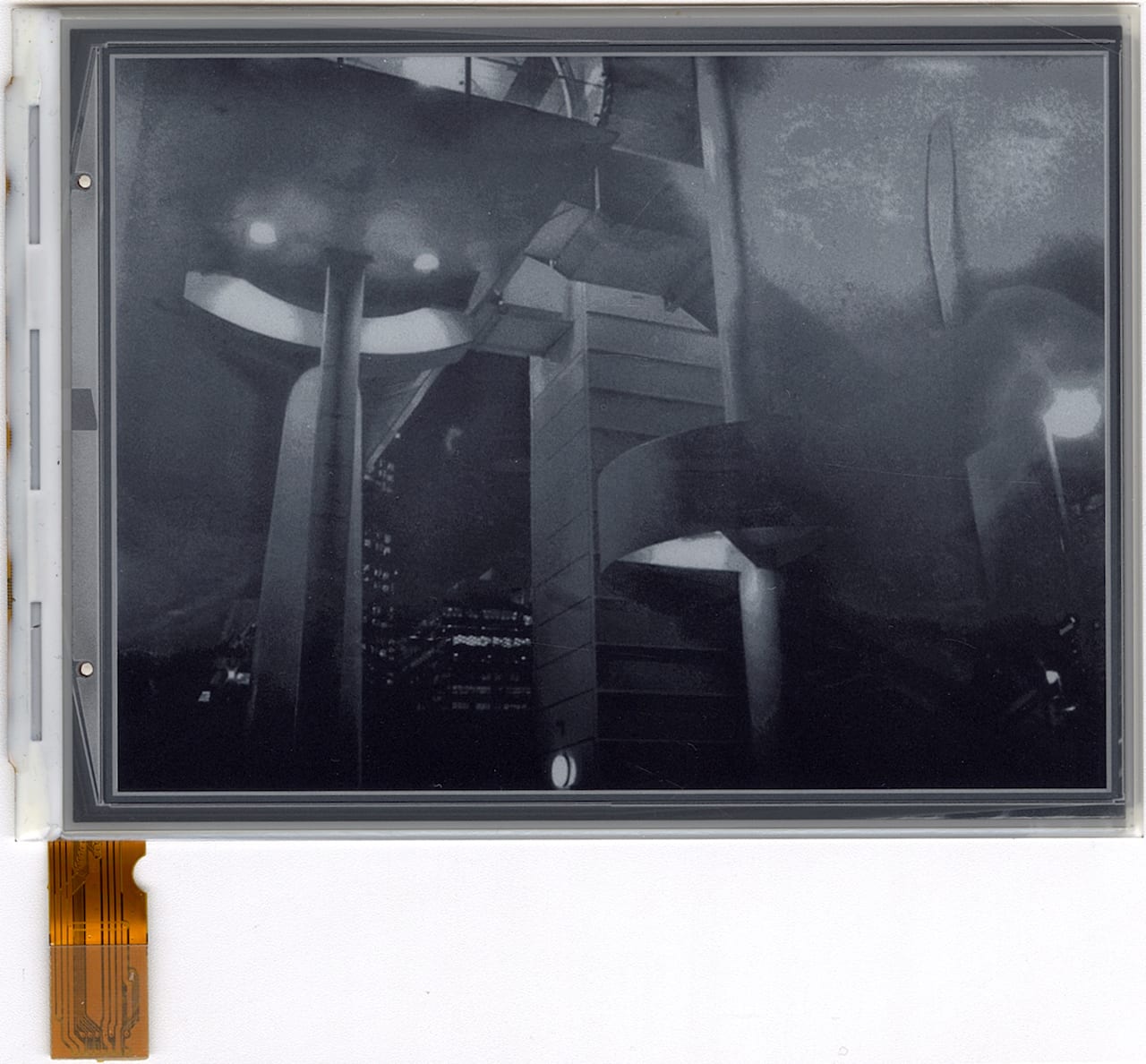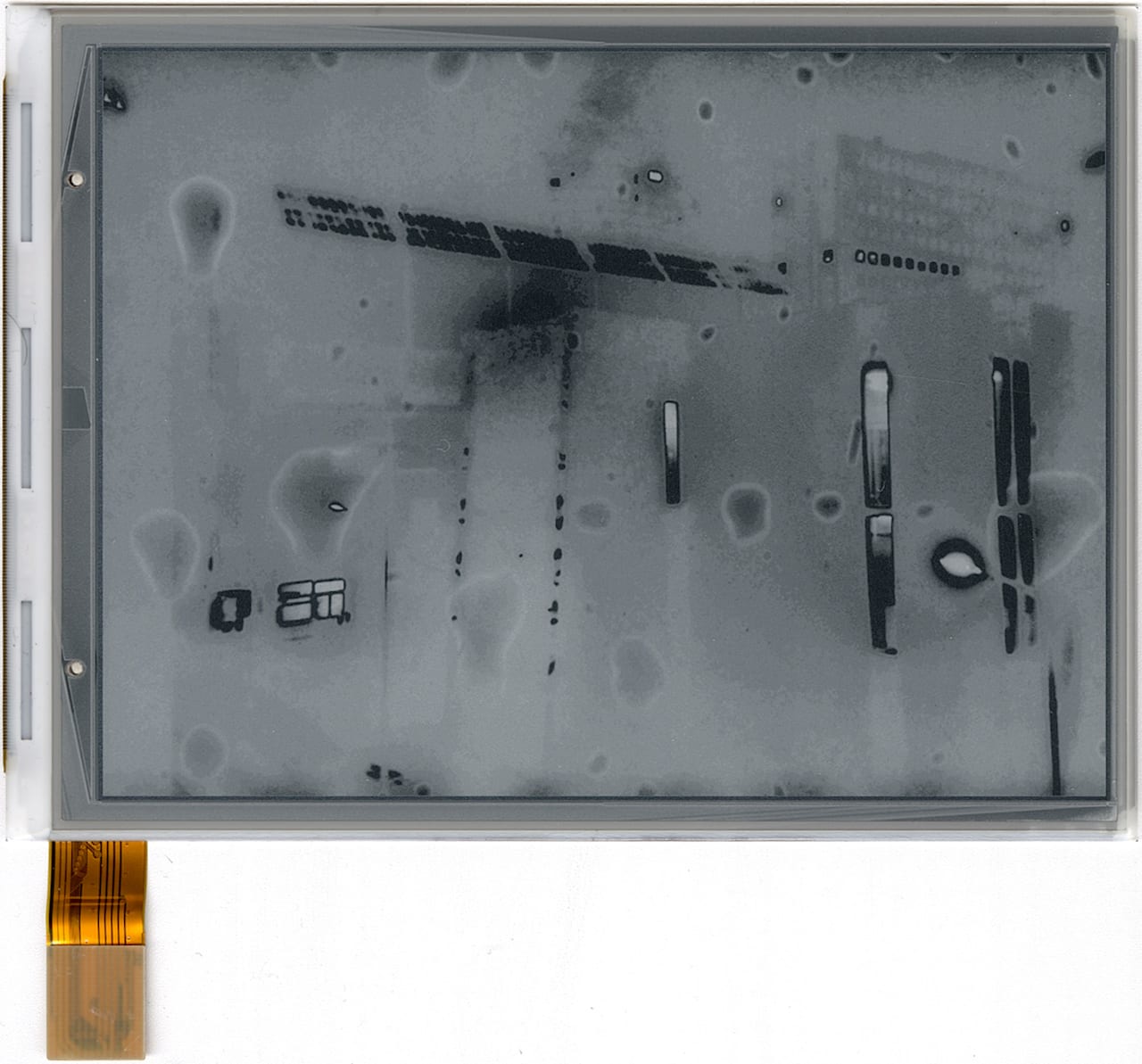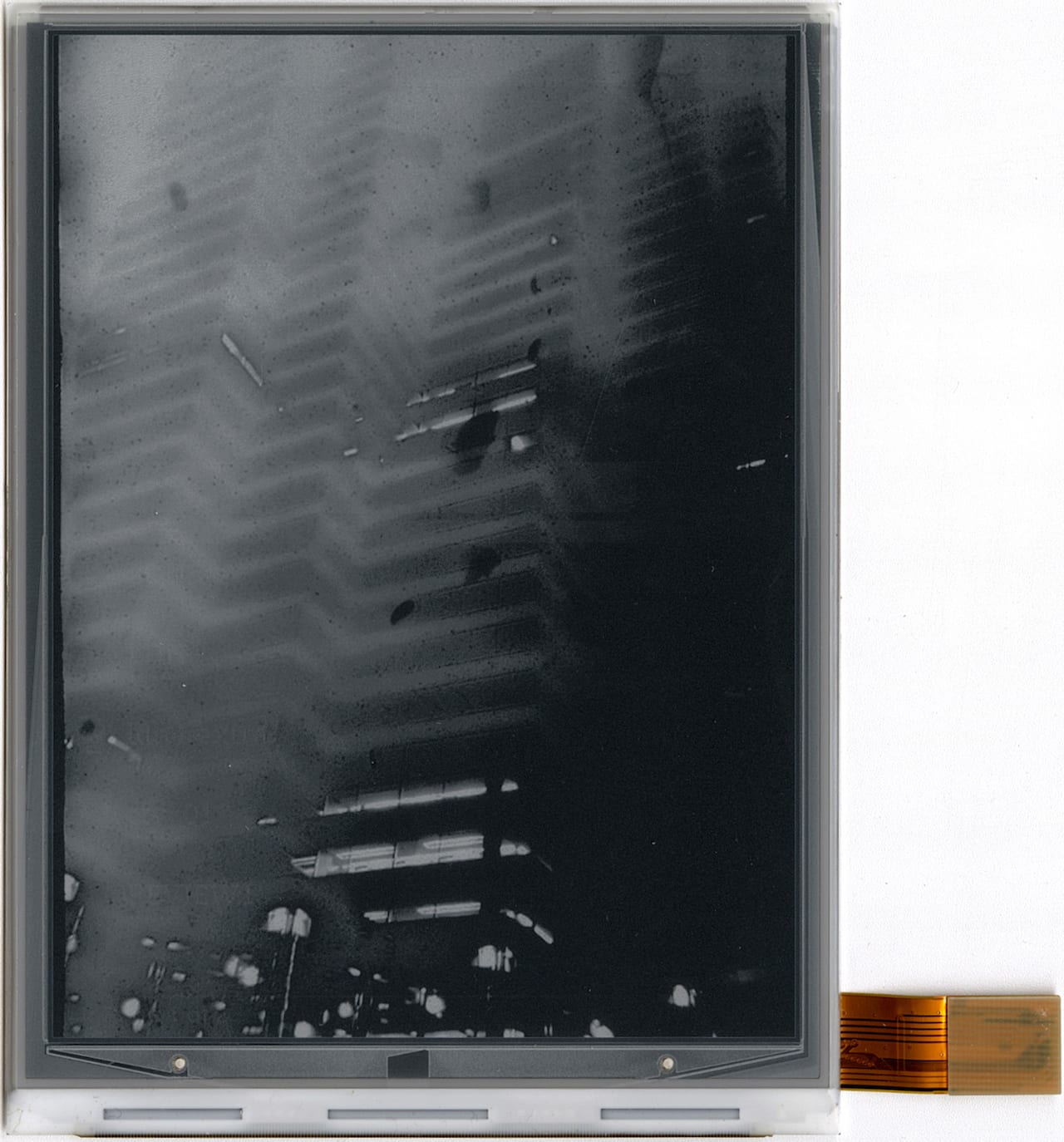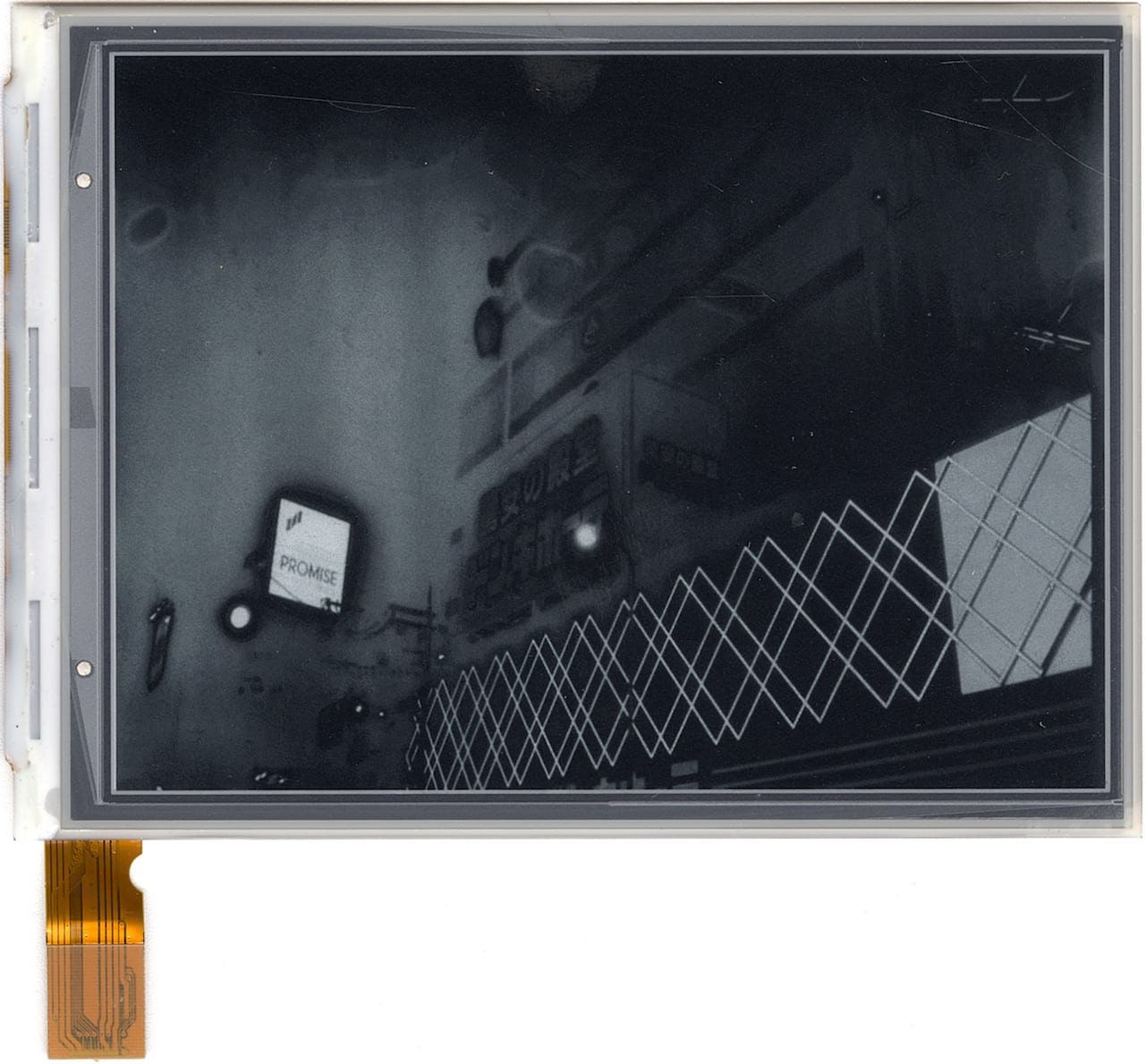“Photography is endlessly linked to technology, it’s always moving forward with it. There are lots of ways you can reproduce a photograph, ways that are often forgotten about,” says Antony Cairns, describing the technology behind his electronic ink images.
Since realising he could freeze the display on his kindle book reader by disconnecting its power, Cairns has acquired over 500 second hand e-readers, mostly from eBay. By hacking into the e-readers he’s is able to upload his photographs, suspend them within the screen, and then remove the screen from the device’s casing. “I’m not a computer whizz kid hacker,” he says, “I just watched a lot of YouTube!”
45 of these screens are now on show at Tate Modern in Shape of Light: 100 Years of Photography and Abstract Art, showing abstract images of global metropolises.
Cairns is interested in the reproductive nature of photography, he says, along with “recycling and reusing” technology and in particular “things that are lost along the march forward”. “As photography gets more advanced, there are always a lot of ways you can make an image digitally that have been forgotten about,” he says. “It’s all about marrying the right process with the right image.”
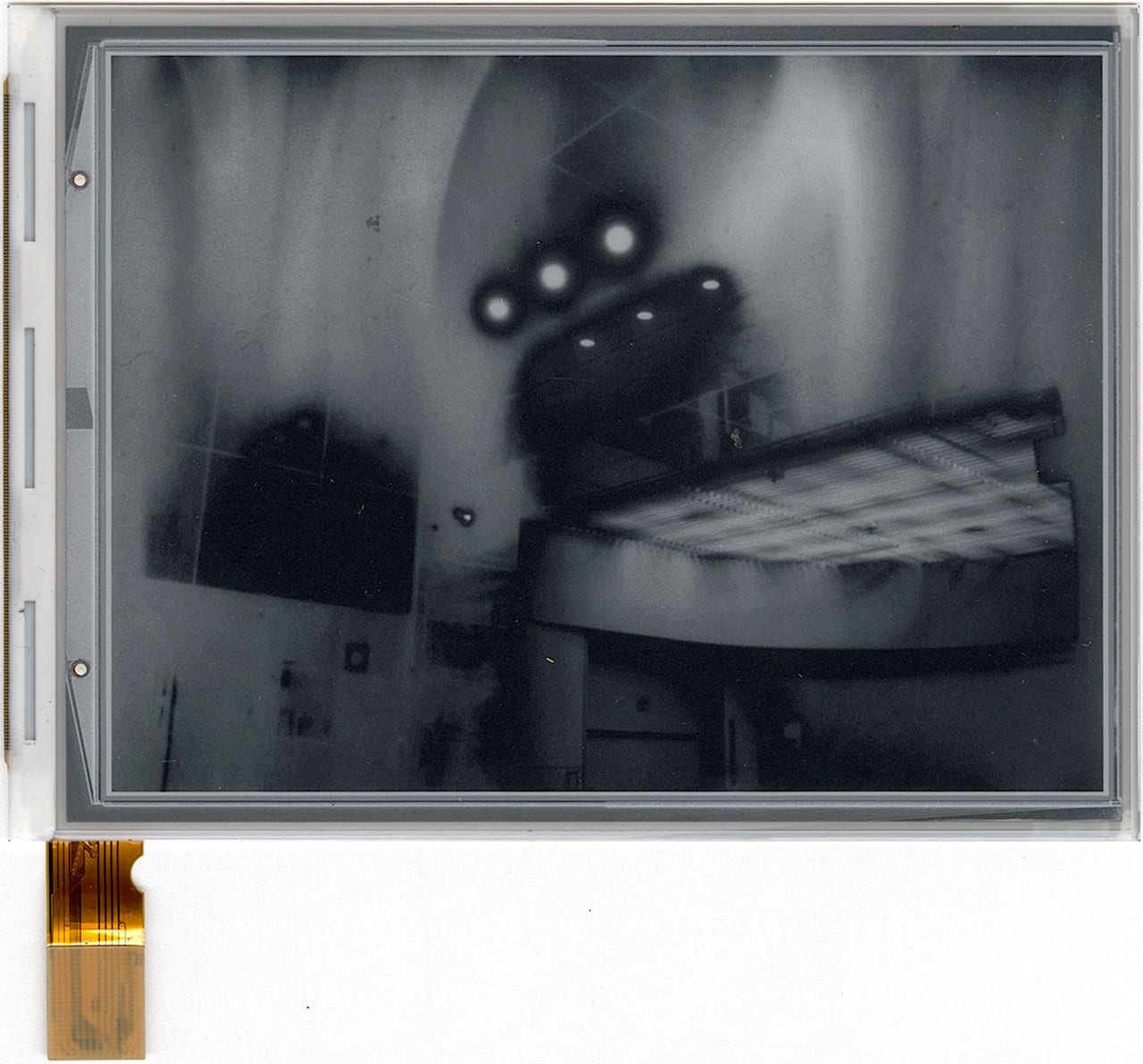
Even so, publishing a photobook on an app for a smartphone or tablet didn’t appeal to him, so he sought to upload his images onto “the actual machine of the unique object of the reader”. “It’s more of a digital photobook than something that’s on an app,” he says, describing his screens as “etch-a-sketch digitised technology”.
Photographing cities began as a personal project in London, which saw Cairns taking pictures of historical buildings such as closed-down pubs and vintage shops. But on returning to these places, he realised that many of them were disappearing and being replaced by “huge conglomerate mega-complexes”.
He decided he’d like to photograph the new landscape but, as these large-scale developments are often owned by property developers, he would often be told he needed permission to shoot on his 5×4 camera. He resorted to sneaking around late at night instead, using a small electronic camera that helped push him into a more abstract approach.
Noticing the same developments in other countries, Cairns began to take photographs using similar methods in cities, including Tokyo, Osaka, LA and Las Vegas. The idea is to build an archive of images, he says, not of “each city” but of “city”, to capture “the ambience and atmosphere of cities in general”.
https://www.antony-cairns.co.uk/ 45 E.I Screens in on show as part of Shape of Light: 100 years of photography and abstract art at Tate Modern from 2 May – 14 October https://www.tate.org.uk/whats-on/tate-modern/exhibition/shape-light https://www.romanroad.com/artists/antony-cairns/
